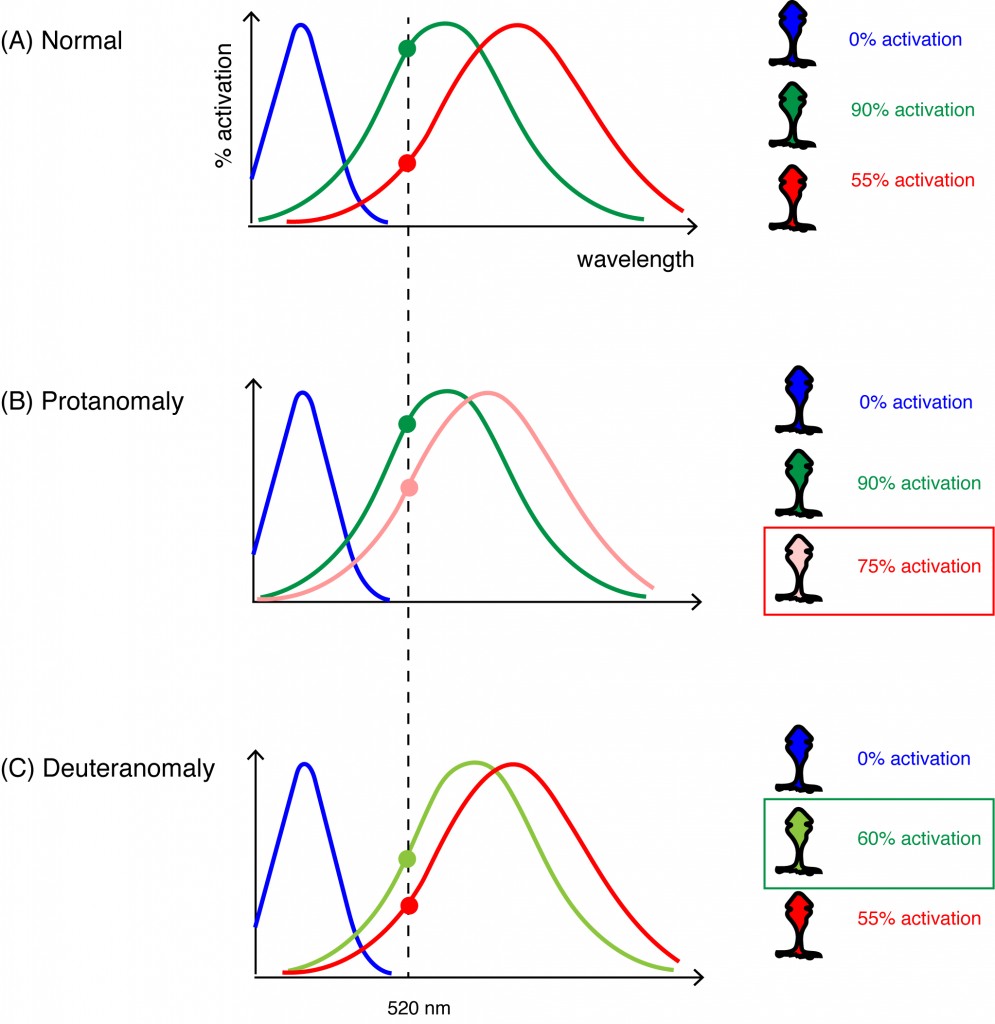Science
Related: About this forumA Scientist Accidentally Developed Sunglasses That Could Correct Color Blindness
A Scientist Accidentally Developed Sunglasses That Could Correct Color Blindness
The California company EnChroma is creating lenses that allow some to see colors for the first time

[font size=1]
The impact of EnChroma sunglasses: the left shows what a wearer with red-green colorblindness would typically see. The right shows what they see while wearing the sunglasses. (EnChroma)
[/font]
By Li Zhou
smithsonian.com
March 3, 2015
One afternoon in 2005, Don McPherson was playing ultimate Frisbee in Santa Cruz. He was wearing a pair of sunglasses, when his friend, Michael Angell, admiring his eyewear, asked to borrow them. When he put the glasses on, he was stunned by what he saw.
McPherson recalls Angell saying, with surprise, “I can see the cones,” referring to a set of orange traffic cones nearby. What made this a startling observation was that Angell had been colorblind his whole life. The sunglasses, which McPherson, a materials scientist, had engineered, actually allowed him to see the orange hue for the first time, and distinguish that color from the surrounding grass and concrete.
Based in Berkeley, California, McPherson, who has a PhD in glass science from Alfred University, originally specialized in creating eyewear for doctors to use as protection during laser surgery. Rare earth iron embedded in the glasses absorbed a significant amount of light, enabling surgeons to not only stay safe, but also clearly differentiate between blood and tissue during procedures.
In fact, surgeons loved the glasses so much, they began disappearing from operating rooms. This was the first indication that they could be used outside the hospital. McPherson, too, began casually wearing them, as sunglasses. “Wearing them makes all colors look incredibly saturated,” he says. “It makes the world look really bright.”
More:
http://www.smithsonianmag.com/innovation/scientist-accidentally-developed-sunglasses-that-could-correct-color-blindness-180954456/#78Jb6BvOY0zQMLv8.99
truedelphi
(32,324 posts)Some of whom do not even know they suffer from it.
Thor_MN
(11,843 posts)I remember we did the tests at least twice. Don't know if they have stopped doing that or other states didn't bother.
eppur_se_muova
(36,301 posts)Judi Lynn
(160,644 posts)Expensive, as the first link mentions, but they would be worth it, no doubt.
Married to someone who's colorblind. No doubt it could be extremely interesting to him.
Thanks again, for adding more information.
Jim__
(14,088 posts)A couple of images from the overview:

Figure 3 ~ Cone cells in the eyes of people with normal vision detect a range of wavelengths. When wavelengths of 520 nm reach the eye of someone with normal vision, red cone cells are excited to about 55% and green cones are around 90% activated. In protanomaly and deuteranomaly, the spectrum of the red or green cone is moved slightly closer to the other, which changes the level of activation of the mutated cone.
[hr]

Figure 4 ~ The many layers in the lenses of EnChroma sunglasses filter out specific wavelengths of light such that the proper combination of cones is activated. This allows people with CVD to see shades of color they have never seen before.
htuttle
(23,738 posts)I can see the line between them if I look closely (it's most noticeable on the sky portion), but that's just a difference between brightness, not hue.
I don't notice a lot of problems from being colorblind, other than doing electrical wiring. If I need to do that, I find that a cheap pair of 3D glasses (the red/blue ones), or just asking my wife about the wire colors, does the trick.
Paulie
(8,462 posts)The lenses correct the light coming in. What would be cool to know is if you wear the glasses would both sides of the picture look the same still, but "corrected". ![]()
cpwm17
(3,829 posts)with bright greens and bright orange-reds on the right – both absent on the left.
The glasses should at least partially allow color-blind people to see the brighter reds and greens.
cpwm17
(3,829 posts)Judi Lynn
(160,644 posts)since reading this article.
This is the first video I've seen which indicates the changes a person really experiences.
Thank you so much for sharing this.
Hope Tyrone will always have a spare pair somewhere close at hand.
Response to Judi Lynn (Original post)
Name removed Message auto-removed